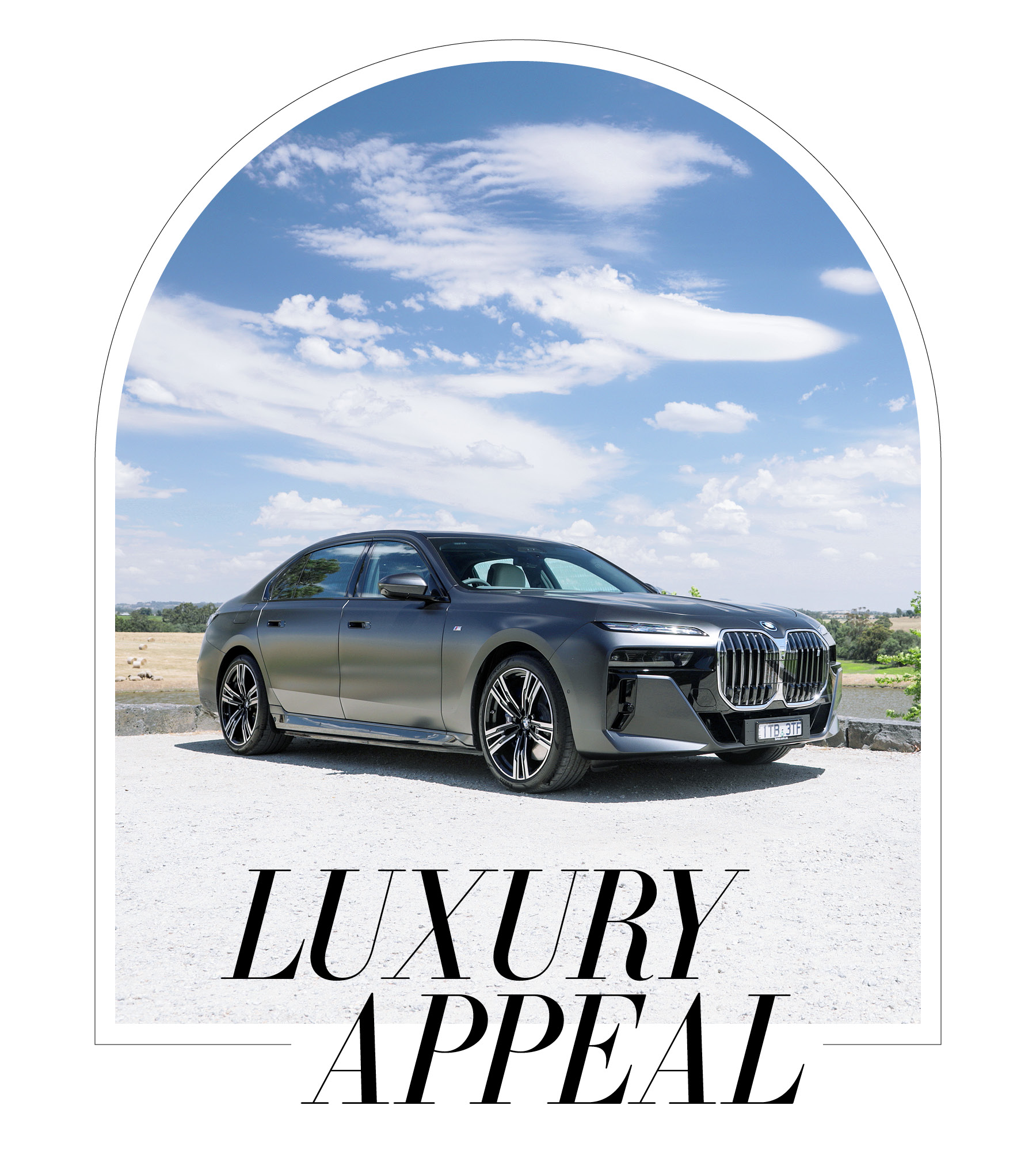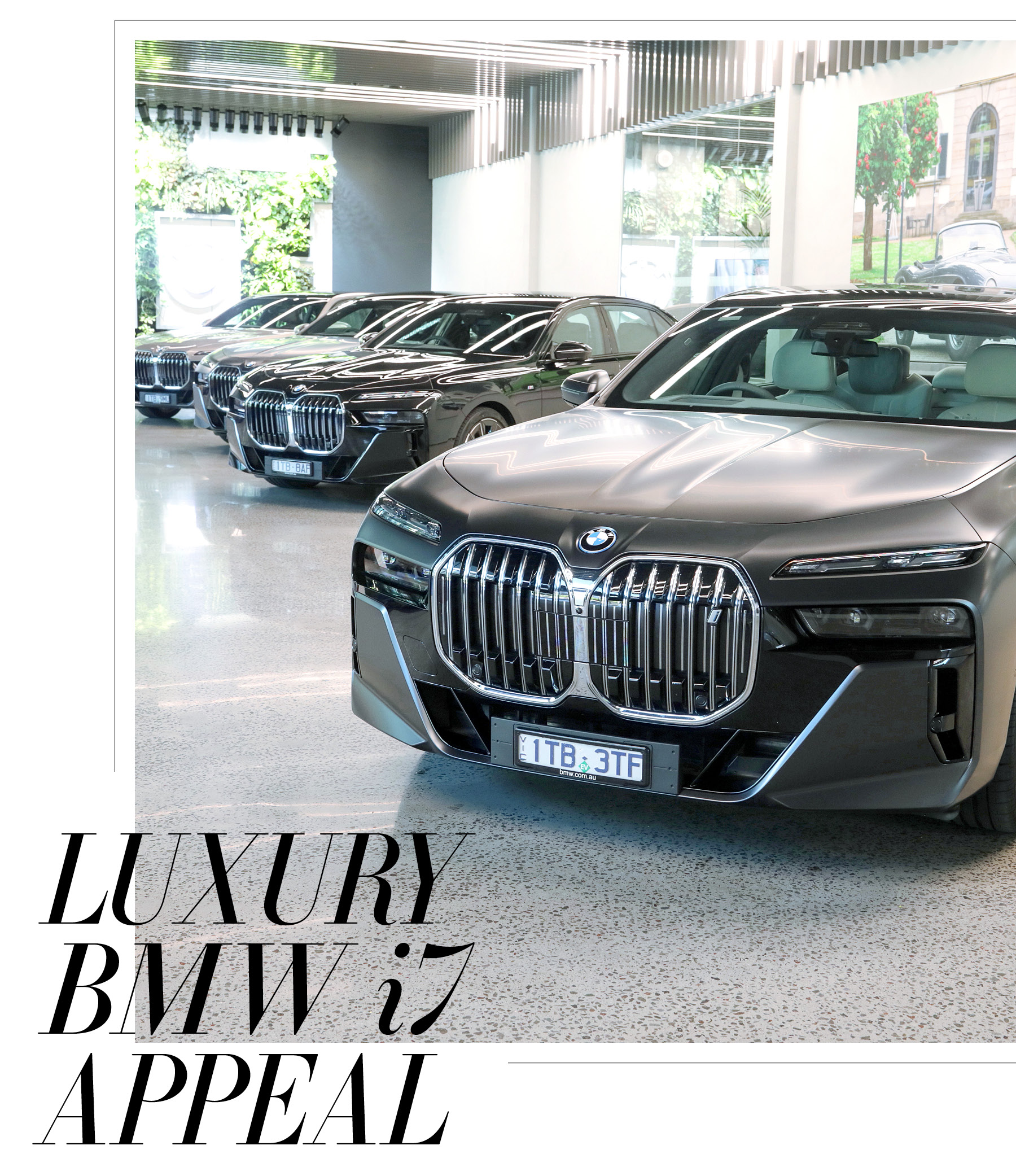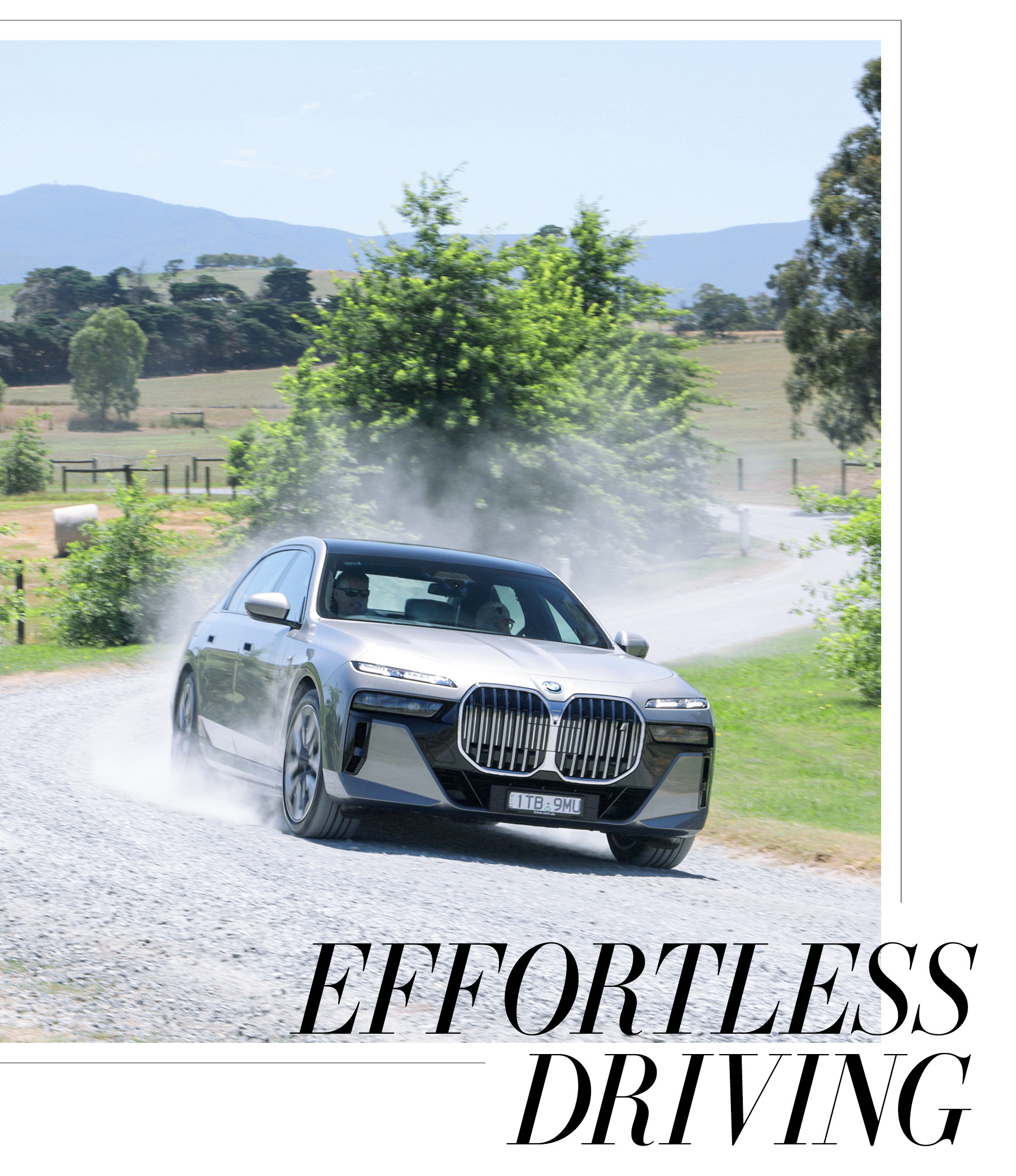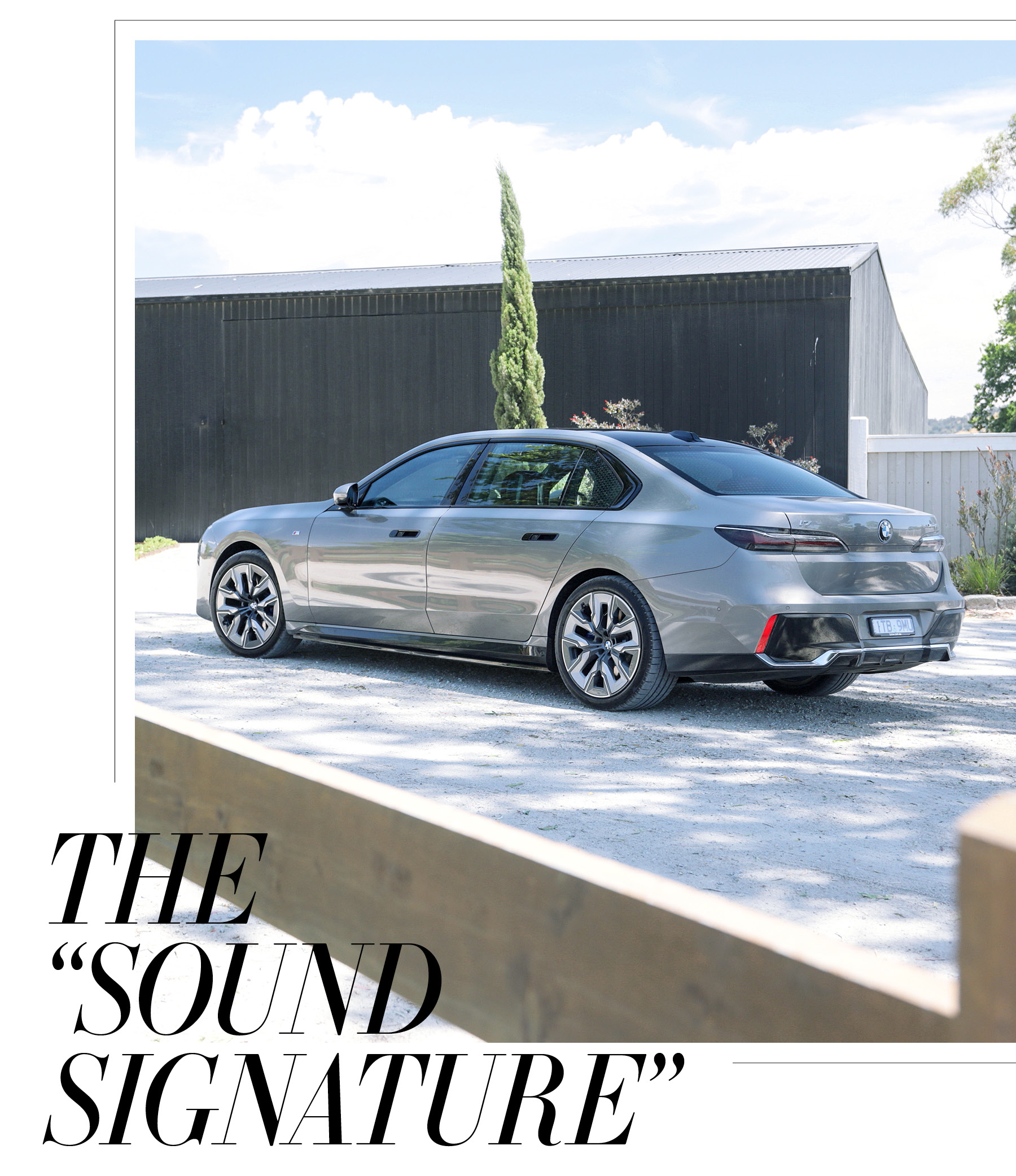Language
You can read the magazine in one of the following languages
Geolocation
You can read the global content or the content from your region

Remember simpler times when a thing was just, well, a thing and nothing else? Like when your phone was just a phone, for example, and not an ‘unkillable’ connection to late-night work emails and photos of your friends’ kids or pets? Or when your watch just told the time and didn’t count steps (too few), calories (too many) and sleep cycles (or lack thereof)?
Those times have changed, of course, and nowhere is that more obvious than from inside the new BMW i7 – the German powerhouse’s new electric flagship vehicle. Because while it’s obviously a car, that’s really the least of its abilities.

But let us start from the top. The 7 Series has been BMW’s flagship model since 1977. It’s one of those limousine-style cars in that you’re every bit as likely to find the owner nestled in the rear seat as you are behind the wheel, and where the brand has traditionally debuted its newest and most cutting-edge tech.
Usually, such stuff falls into the boring-but-important camp – things like smarter headlights or new navigation – most of which would eventually filter down to BMW’s lesser models. But something tells me that won’t be the case this time around. Because fitting what feels like a cinema-sized screen into the back of a bite-sized 1-Series could prove too big a challenge.
But there are no such space issues in the back seat of the i7, an area so large – and so trimmed with real wood grain and animal pelts – you feel like it should be measured by the mile. And this is why the brand has been able to change the in-car entertainment game so comprehensively.

You know those iPad holders you can buy for the back of the front-seat headrests to keep the kids entertained on longer trips? Well, BMW has got its own version, except the German solution is a little more impressive.
You slide into the back seat – which, by the way, is wrapped in cashmere and offers a full-body massage function – and then, at the push of a digital button, the cabin transforms from vehicle to all-out cinema.
First, automatic blinds deploy over all the rear glass windows, blocking movie-ruining light from the back seat. Next, a massive 79.5 centimeter screen unfolds from the middle of the roof of the i7, obstructing the view out of the front windscreen (and with it, the remaining light) and converting the BMW into less of a drive-in cinema and more of a high-tech drive-through cinema.

It runs Amazon Fire, which delivers the major streaming services straight to your back seat, and pairs with a 35-speaker Bowers & Wilkins surround-sound system that includes seat shakers for a body-shaking 4D experience. It’s seriously jaw-dropping tech, and it makes all the other cool stuff pale in comparison.
Take, for example, the Swarovski crystal front lights, which dance a happy digital dance every time you unlock the car, or the fact that, should you return to your i7 and find someone has parked too close, you can simply move your car out of the spot using a self-driving app on your smartphone.
The screen can run Zoom, too, for those unavoidable meetings. However, what BMW calls the ‘Theater Screen’ is far more impressive when you’re playing a Hollywood blockbuster at full volume.

Electricity is well on its way to taking over every possible new-car segment, but I don’t think any vehicle type suits the silent, torque-rich nature of an electric vehicle (EV) as much as a high-end limousine.
In the i7, two small-but-powerful electric motors, one positioned at each axle, replace what would have been six, eight or even 12 cylinders. Combined, there’s 400 kilowatts of power and 745 newton meters of torque on offer, which is more power and about the same torque as the previous generation’s V8 engine produced.
It’s enough to push this 2.6 metric ton luxo-barge to 100 kilometers per hour in a spritely 4.7 seconds. But to plant your foot and hold on is to miss the point here. Instead, use the power only as you need it, and you’ll flow through traffic in near-silent and entirely effortless fashion.

The i7 is not attempting to be a performance EV – it leaves that to models like the Porsche Taycan. Instead, its one true mission is to protect the cabin’s occupants from whatever is happening outside its windows, as well as whatever is happening beneath its tires.
With the adaptive air suspension set to its most comfortable settings, the i7 genuinely glides over rough road surfaces. There is no big engine noise to dull, and so the cabin is remarkably quiet, keeping the outside world from interrupting your ambience as surely as if you were behind a space shuttle airlock.

When you do want noise, you can call on famed composer Hans Zimmer, with each driving mode adopting its own sound signature – with some sounding like an orchestra sweetly swelling with your acceleration, and others that sound, at low speeds at least, like someone is stamping on a half-inflated bagpipe. Either way, it’s the most unique example of an EV soundtrack that I’ve encountered.
Delivering range is a big 106 kilowatts-per-hour lithium-ion battery, which BMW says will return an “up to 625 kilometers” driving range on the worldwide harmonized light vehicle cycle. When it does come time to plug it in, the i7 can accept 195 kilowatt direct-current fast charging, which should see you go from 10 percent to 80 percent charged in around 34 minutes and accrue 170 kilometers in driving range every 10 minutes.

Plugging it in at home will take a lot longer. This is a big battery and even with a seven kilowatt wallbox, you’re looking at around 16 hours to charge the battery. A standard plug will take a touch over 50 hours to get the same charge.
The i7 is yours for US$206,020, which is a sizable investment. But I would argue that you won’t find this level of technology, effortless forward progress or luxury outside of a Rolls-Royce or Bentley. And when you look at it that way, the BMW i7 suddenly starts to feel like a very expensive bargain.